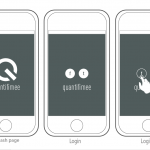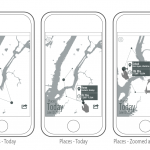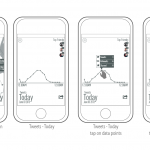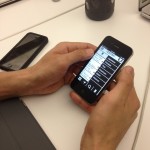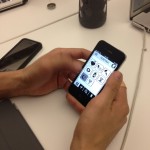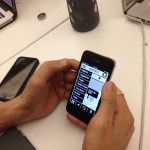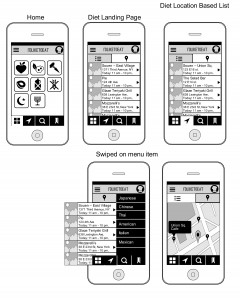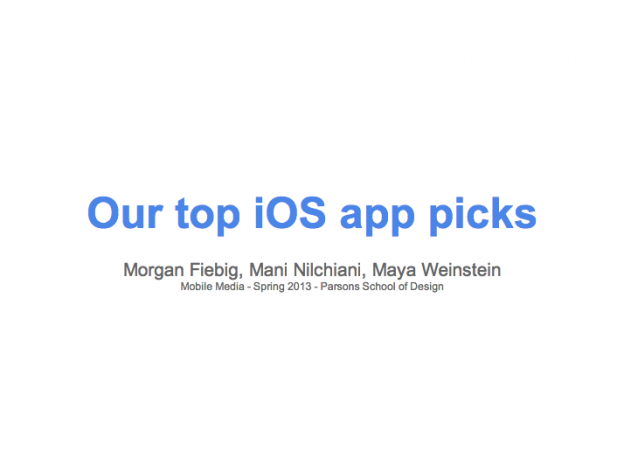Views from quantifiMe application.
Author: Mani Nilchiani
Final assignment: Quantify.me round one wireframes and app map (-ish)
So this is round one of what Juan and I are working on. An app for quantifying one’s life. Some screens, app map + workflow.
Suno App
Let’s face it. Waking up in the morning having slept nowhere close to enough hours is not an easy task. Having an app that wakes you up with a combination of light and smooth sounds has served me right over the past couple of weeks. Furthermore, the heavily gesture-based interface makes it cool to set up alarm clocks. Beautiful minimal design, nice typography, and “Clear”‘s alarm clock cousin does a nice job as an alarm clock app. Quoting the app’s website:
Two hundred years waking up hitting an alarm clock, what if we do something new? Try our application. It is called Suno (“sun” in esperanto), and it uses light for waking you up in a smooth way, preparing you for the day. You can select how you want to wake up by setting the light intensity and adding natural sounds to reinforce the process if you feel particularly lazy.
With Suno, your device’s screen becomes a beautiful dawn. Half an hour prior to the time set to wake up, Suno activates your smartphone screen and brightens the room gradually with a soft light, just like dawn. While you are still sleeping, the light gently prepares your body for the awakening. If you set the time to wake up at 8:00 am, the light will begin to increase gradually from 7:30 am. at 8:00, the light will reach its highest level, which can be adjusted according to your preferences. At the set time, your body will be prepared and the natural sounds will accompany the light. You will wake up feeling good.
http://www.nizolab.com/#!suno-app/c1otv
https://vimeo.com/59836941
User Testing : Idliketoeat
Initial round of user-testing for idliketoeat. More to come soon.
I’dliketoeat progress
Best iOS apps presentation – Session 2
What we presented with Morgan and Maya.
Rough Ideas for Food App – Mani Nilchiani
1 – Some of us have the habit of letting the world know where we are and what we’re up too, more frequently than others. How do we achieve this? By “checking in” using the geolocation api. Either on facebook or foursquare, we leave footprints of where we are and what we are up too. The places we check into, are semantically defined in the databases used by such systems. So bars, restaurants, parks and schools are entities that tell us about the nature of the place we checked into. One idea could be tapping into this user behavior, and design and application that keeps track of all our checkins in restaurants, and based on our behavior and using machine learning algorithms finds ‘similar’ places we might be interested in trying out, taking the cognitive load of finding more of what we like off the user’s shoulders. Alternatively, the app could be set in a way that it suggests varieties. So if you are a huge fan of Chinese cousine, the app makes sure you get enough tempting suggestions of other cuisines to flavor up your eating habits!
2 – Eating is not all about taste. It’s also about atmosphere. If you care as much as the quality of food about the quality of the experience you get out of your visit to a restaurant, one idea could be an app that gradually gets to know your eating habits, urges you to quickly rate the overall eating experience / restaurant atmosphere and gradually builds a database of such user-generated content. If you’re a fan of a cosy low-light places with loung / jazz music going, or if you want to get energized while eating, and see lots of colors and upbeat music, this app makes it possible for you to navigate the food industry based on your other senses, not just taste!
3 – (in collaboration with Maya Weinstein, continuation of a previously prototyped web-app “idliketoeat”): Do you live your life with a dietary restriction? Do you look for Gluten-free food on the menus in the hope of finding variety while maintaining your diet? Are you looking for a super quick and easy way to spot Halal food? Is eating healthy all you care about at this moment, and you don’t have a lot of time browsing through a sea of options to find the food you want? idliketoeat is here to help. Focusing on spotting food based on dietary restrictions as the core functionality, idliketoeat makes is easier than ever to narrow down your food search. Spot the nearest vegan restaurants in one click, and spend your time enjoying the food that’s right for you, instead of clicking on confusing checkboxes and nested navigation menus. But that’s not all. While maintaining focus on dietary restriction as the primary filter for finding food, “idliketoeat” also gives you choices for various cuisines, when available.
